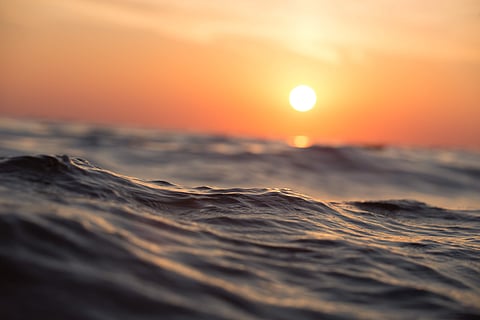Permanent marine heatwave at the Indian Ocean door
A new study shows that increasing concentration of greenhouse gases in the atmosphere could lead to permanent marine heatwaves by the end of the century in the Indian Ocean, which is bordered by 40 countries and the world’s one-third population.
The Indian Ocean is already one of the most natural disaster risk prone regions. Excessive warming that leads to permanent marine heatwaves, could trigger rapid intensification of tropical cyclones – where a cyclone could intensify from a depression to a severe category in a few hours and cause severe destruction in the region. Moreover, it will alter the whole marine ecosystem, too.
The study, ‘Future projections for the tropical Indian Ocean’, led by a group of scientists of the Indian Institute of Tropical Meteorology (IITM), Pune, delves deep into the evolving climate of the Indian Ocean and its future projection.
The current periodicity of Marine heatwaves is 20 days per year. Such heatwaves could increase to a whopping 220–250 days per year by the end of the century, the study warned. Marine heatwaves are defined as periods of extremely high temperatures in the ocean. In addition, rapid warming leads to increased ocean acidification. The Indian Ocean is projected to acidify further, with the surface pH going under 7.7 by the end of the 21st century, compared to a pH above 8.1 during the early 20th century.
Acidification impacts organisms and alters marine ecosystems like habitat destruction due to coral bleaching, seagrass destruction and loss of kelp forests, affecting the fisheries sector adversely.
“The projected changes in pH may be detrimental to the marine ecosystem since many marine organisms are sensitive to the change in ocean acidity. The change may be easier to fathom when we realize that a 0.1 fall in human blood pH can result in rather profound health consequences and multiple-organ failure,” states Roxy Mathew Koll, main author of the study.
Besides, a permanent heatwave state leads to a decline in surface chlorophyll, an essential component for the photosynthesis process where ocean plants produce food for themselves. Across the world, the frequency of marine heatwaves has increased on an average by 34% and the duration by 17% during the last century due to global warming. The study predicts that by the end of the century, global oceans will be in a near-permanent marine heatwave state.
Notably, the number of marine heatwave days in the Indian Ocean is projected to increase from 20 days per year (in historical simulations, 21 days per year in observations) to 250 days per year by 2100. The maximum intensity of marine heatwaves in the Indian Ocean is projected to increase from 0.60°C per year to 3.4°C per year by 2100.
“The Indian Ocean, a climate change hotspot, faces rapid and strong increases in marine heatwave frequency and intensity unless global CO2 emissions are substantially cut,” said Thomas Frölicher from University of Bern, Switzerland, one of the co-author of the study. (see figure)
Warming pace and pattern While the Indian Ocean warmed at a rate of 1.2°C per century during 1950–2020, climate models predict accelerated warming, at a rate of 1.7°C–3.8°C per century during 2020–2100. Though the warming is basinwide, the study underlines that maximum warming is in the northwestern Indian Ocean including the Arabian Sea, and reduced warming off the Sumatra and Java coasts in the southeast Indian Ocean.

